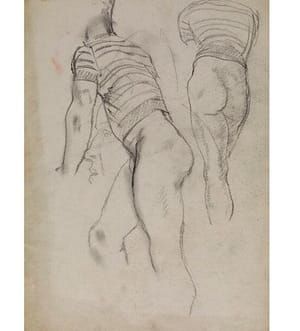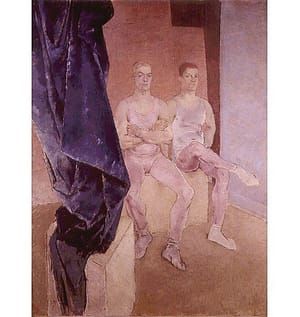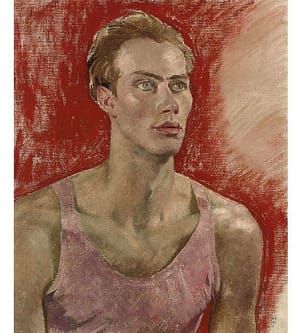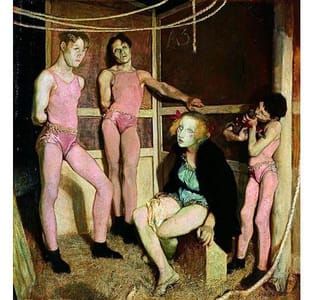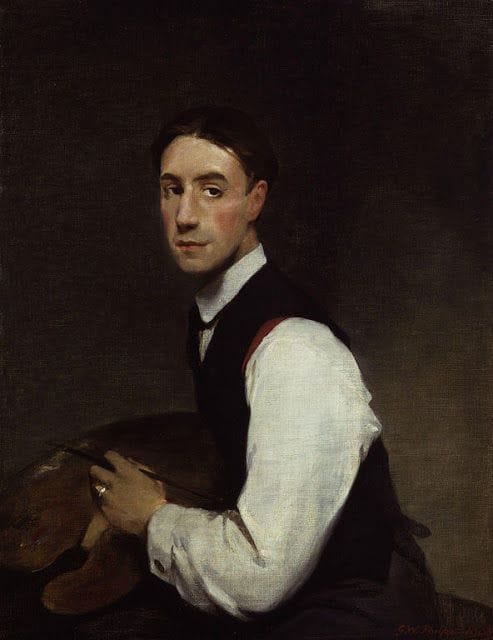

Self Portrait
Glyn Philpot
Philpot, R.A. was a highly accomplished, successful portrait painter in England in the 1920s and 30s who had studied painting at the Lambeth School of Art in London and at the Academie Julian in Paris under J.P. Laurens. After travels to Spain, his portrait work reflected his love for the paintings of Velázquez. In notes for the auction of this portrait in London on July 11, a Christie’s specialist writes, “Faced with the young American girl, Ellen Borden, clad in pale lemon trimmed with gauze, it was not surprising to find Philpot producing a modern 'infanta'.” Philpot’s contemporaries considered him to be a masterful craftsman. And critics celebrated his exceptional ability to capture the sitter’s personality, particularly in his informal portraiture. This more formal portrait of Ellen Borden surely must have confirmed that attribute of his work. Philpot also painted genre studies and religious, mythological and allegorical subjects, and was a sculptor, as well. Apparently some of his later work was too sexually explicit for the public and he suffered financially as a result.
In Harold Speed’s outstanding 1924 treatise on the “science and practice” of oil painting, now titled “Oil Painting Techniques and Materials,” he lists some palettes of contemporary English painters, and here is the list of colors obtained from Philpot, right to left, with colors used occasionally in Italics: Light red, Indian red, Vermillion, White, Yellow ochre, Raw umber, Burnt umber, Ivory black, Cerulean blue, Cobalt, Terra vert, Burnt sienna. He used copal varnish thinned with turpentine for his medium and for glazes. And just to show how serious I am about this technical stuff, I even looked up the definition of “ultramarine ash,” which Philpot sometimes used for delicate grays. Here is the 1913 definition, brought to you courtesy of the Internet: “Ultramarine ash is a pigment which is the residuum of lapis lazuli after the ultramarine has been extracted. It was used by the old masters as a middle or neutral tint for flesh, skies, and draperies, being of a purer and tenderer gray than that produced by the mixture of more positive colors.” But you probably already knew this. Sounds something like Gamblin’s Torrit Grey, made of recycled pigment dust, although I’m sure nobody uses that color for anything other than to enter a painting in the manufacturer’s annual Torrit Grey competition!
Philpot’s list of colors won’t help us paint better, of course. But can’t we try to connect emotionally with each subject, as he must have done, and not strive so hard to get a frozen, photographic likeness in our portrait work? Shouldn’t we strive to let our sitters be recognized on canvas as the distinct, living and breathing individuals they are, rather than as exact replicas of a photograph? But maybe we’re not so interested anymore in rendering soft, tender flesh in all its natural beauty. We’re being taught to prefer the glossy, plastic flesh of dinosaurs, aliens, action heroes and supermodels nowadays.
(http://paintinglifestories.blogspot.nl/2013_06_01_archive.html)
Uploaded on Mar 5, 2017 by Suzan Hamer
Glyn Philpot
artistArthur
Wait what?
